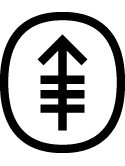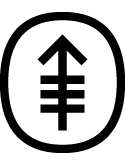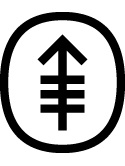G(M2)-KLH conjugate vaccine: Increased immunogenicity in melanoma patients after administration with immunological adjuvant QS-21 Journal Article
| Authors: | Helling, F.; Zhang, S.; Shang, A.; Adluri, S.; Calves, M.; Koganty, R.; Longenecker, B. M.; Yao, T. J.; Oettgen, H. F.; Livingston, P. O. |
| Article Title: | G(M2)-KLH conjugate vaccine: Increased immunogenicity in melanoma patients after administration with immunological adjuvant QS-21 |
| Abstract: | The cell surface gangliosides GM2, GD2, and GD3 are often overex-pressed in malignant melanoma. We have shown previously that immunization of melanoma patients with GM2 and Bacillus Cahnette-Guerin induced an IgM antibody response in most patients and that patients with high titer GM2 antibodies showed increased survival. As is commonly seen with carbohydrate antigens (which are T independent), the IgM response was short lived, and an IgG response was rarely observed. To increase immunogenicity, we conjugated GM2 covalently with keyhole limpet he-mocyanin (KLH). GM2-KLH vaccine was given to melanoma patients alone or with one of the three adjuvants: Bacillus Calmette-Guérin, DETOX, or QS-21. The most effective vaccine was GM2-KLH with QS-21. It induced a much higher titer, a longer-lasting IgM GM2 antibody response, and a consistent IgG response (isotype IgGl and IgG3). It also induced the highest titer anti-KLH response. The results suggest that the conjugate GM2-KLH plus QS-21 vaccine elicited significant T-cell help. Because there was no serious toxicity, this vaccine approach is attractive for augmenting the immunogenicity of other gangliosides, such as GD2 and GD3, and to determine the effects of ganglioside antibodies on the course of melanoma. In addition, the finding that QS-21 significantly increased the immunogenicity of GM2-KLH suggests that it may do the same for other conjugate vaccines, many of which are currently used without adjuvant. © 1995, American Association for Cancer Research. All rights reserved. |
| Keywords: | clinical article; human cell; clinical trial; dose response; bcg vaccine; melanoma; fever; immunology; immunoglobulin g; immunogenicity; antibody response; erythema; antibody specificity; immunological adjuvant; headache; ganglioside gm1; adjuvants, immunologic; immunoglobulin g antibody; drug conjugation; ganglioside gd3; ganglioside gm2; vaccine; antibody formation; antibody production; vaccines; intravenous drug administration; skin nodule; helper cell; antibody titer; drug formulation; antibody dependent cellular cytotoxicity; keyhole limpet hemocyanin; immunoglobulin m antibody; hemocyanin; immunoglobulin m; skin inflammation; intradermal drug administration; qs 21; ganglioside antibody; resorcinol; tuberculin; g(m2) ganglioside; phosphoryl lipid a; antibody-dependent cell cytotoxicity; human; priority journal; article; support, u.s. gov't, p.h.s. |
| Journal Title: | Cancer Research |
| Volume: | 55 |
| Issue: | 13 |
| ISSN: | 0008-5472 |
| Publisher: | American Association for Cancer Research |
| Date Published: | 1995-07-01 |
| Start Page: | 2783 |
| End Page: | 2788 |
| Language: | English |
| PUBMED: | 7796403 |
| PROVIDER: | scopus |
| DOI/URL: | |
| Notes: | Article -- Export Date: 28 August 2018 -- Source: Scopus |
Citation Impact
MSK Authors
-
 59
59Yao -
 228
228Livingston -
 130
130Oettgen -
 25
25Adluri -
 25
25Zhang -
 16
16Helling -
 15
15Jones Calves
Related MSK Work


